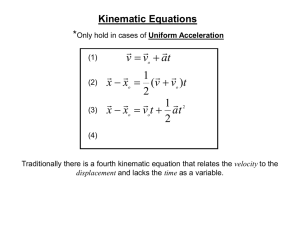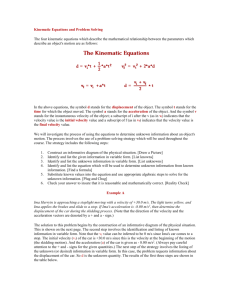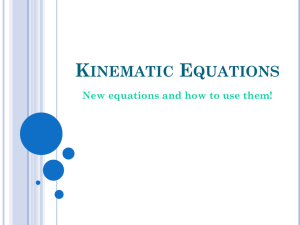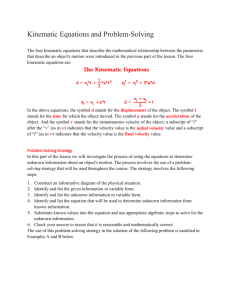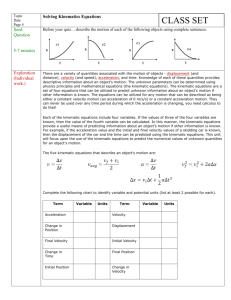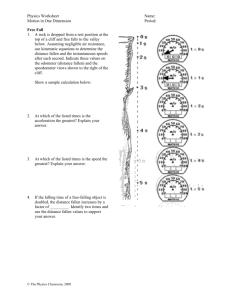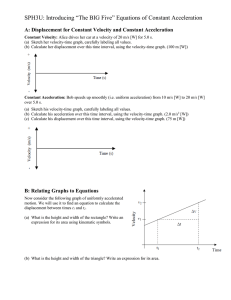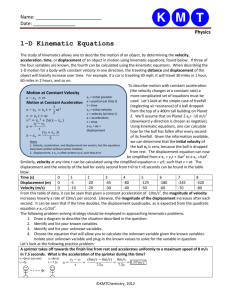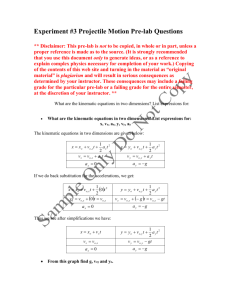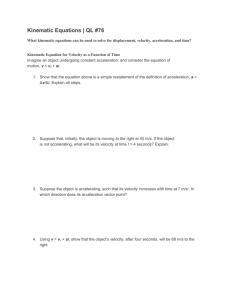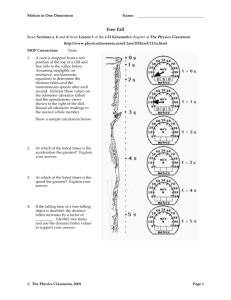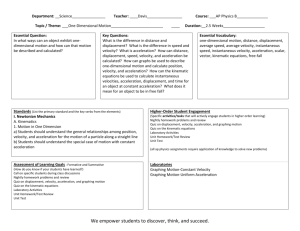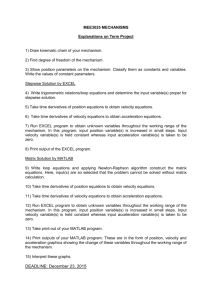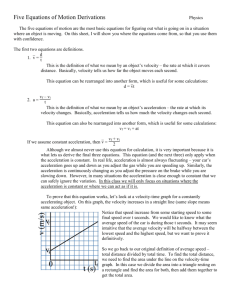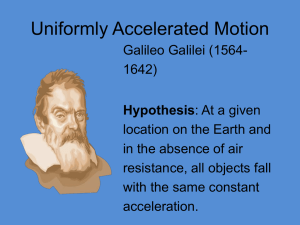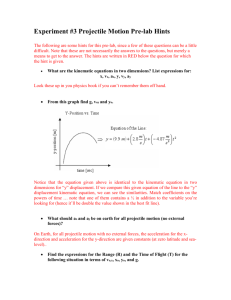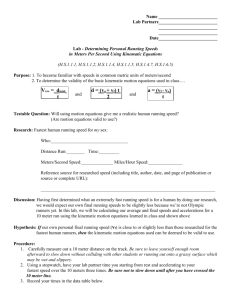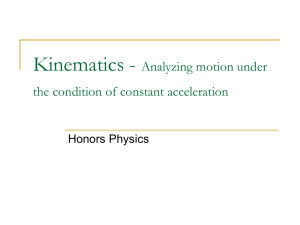Kinematic Equations
advertisement
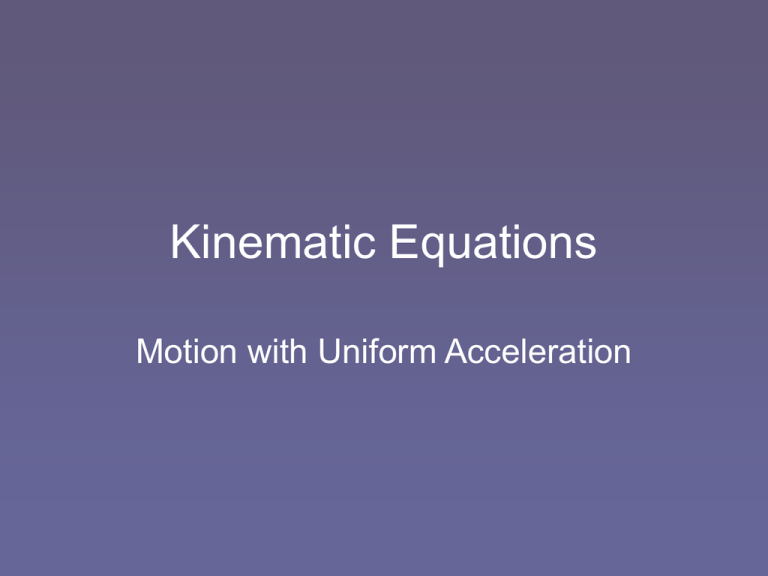
Kinematic Equations Motion with Uniform Acceleration Kinematic Equations • Relationships between displacement, velocity, acceleration, and time • Only work when acceleration is uniform (constant)!! Kinematic Equations All equations derived from three relationships that you already know: vavg v f vi 2 aavg vavg x t v t Equation #1 Final Velocity with Constant Acceleration • Start with aavg = v/t • Rearrange and solve for vf vf = vi + a(t) – Don’t need to know displacement Equation #2 Displacement knowing Change in Velocity • Start with the two equations for vavg • Set them equal to each other • Solve for x x = ½ (vi + vf)t – Don’t need to know acceleration Equation #3 Displacement from Initial Velocity and Acceleration • Start with first two kinematic equations • Substitute expression for vf from #1 into equation #2 • Simplify and solve for x • x = vi(t) + ½ 2 a(t) – Don’t need to know final velocity Equation #4 Final Velocity from Initial Velocity and Acceleration 2 vf = 2 vi + 2a(x) – Don’t need to know time Equation vf vi a x t x = ½ (vi + vf)t vf = vi + a(t) x = vi(t) + ½ a(t)2 vf2 = vi2 + 2a(x) Solving Problems Using Kinematic Equations 1. Determine what the question is asking for 2. List all known quantities – Remember, each equation contains four variables, so you need to know three variables in order to solve for the fourth 3. Pick the appropriate equation 4. Solve for desired quantity

